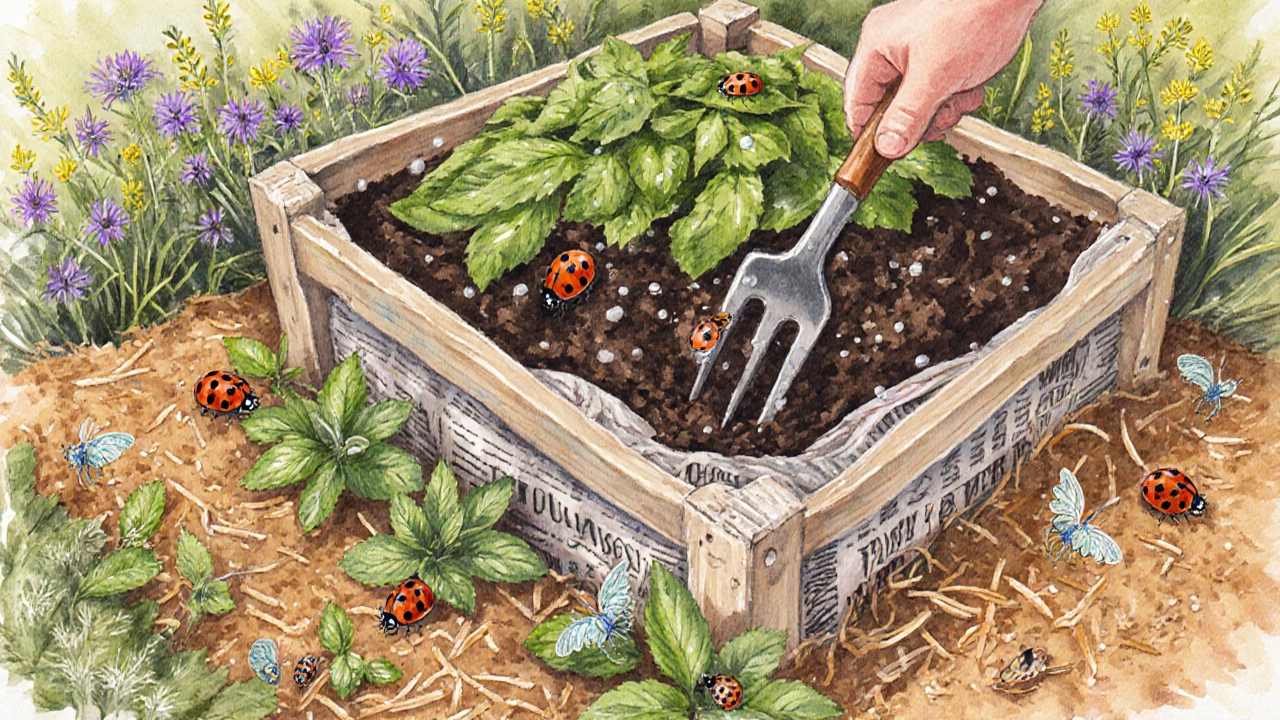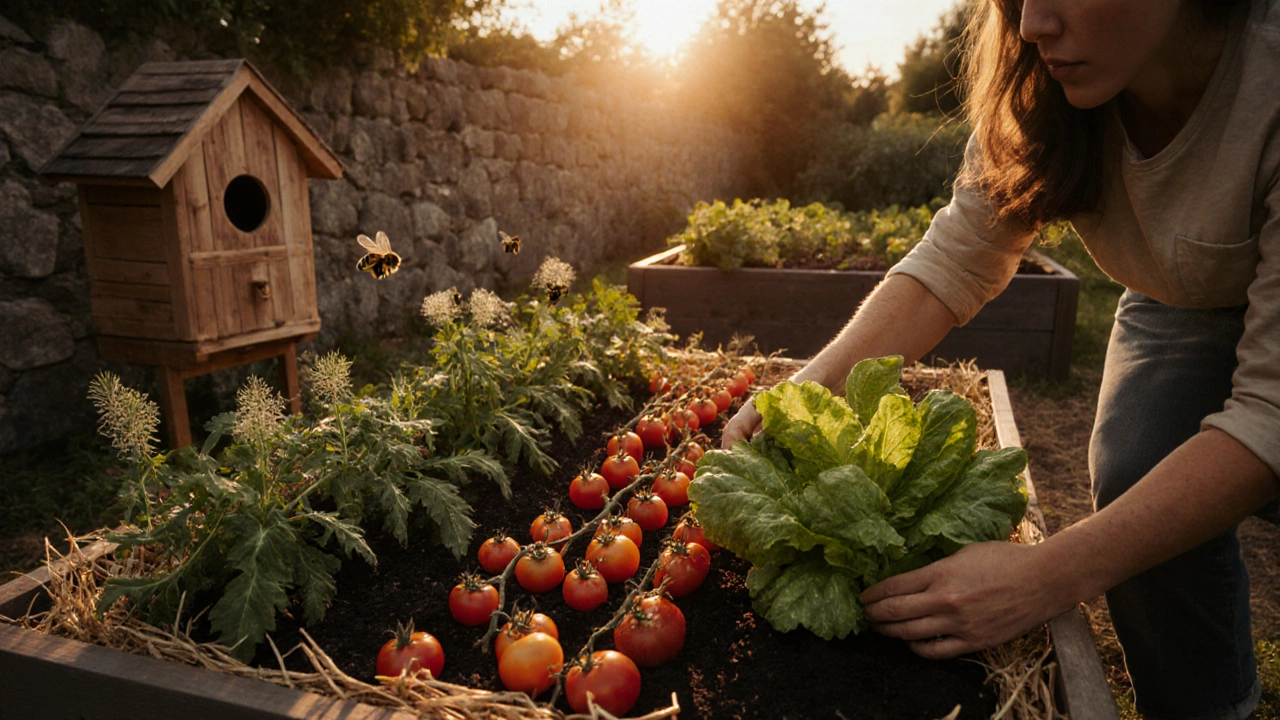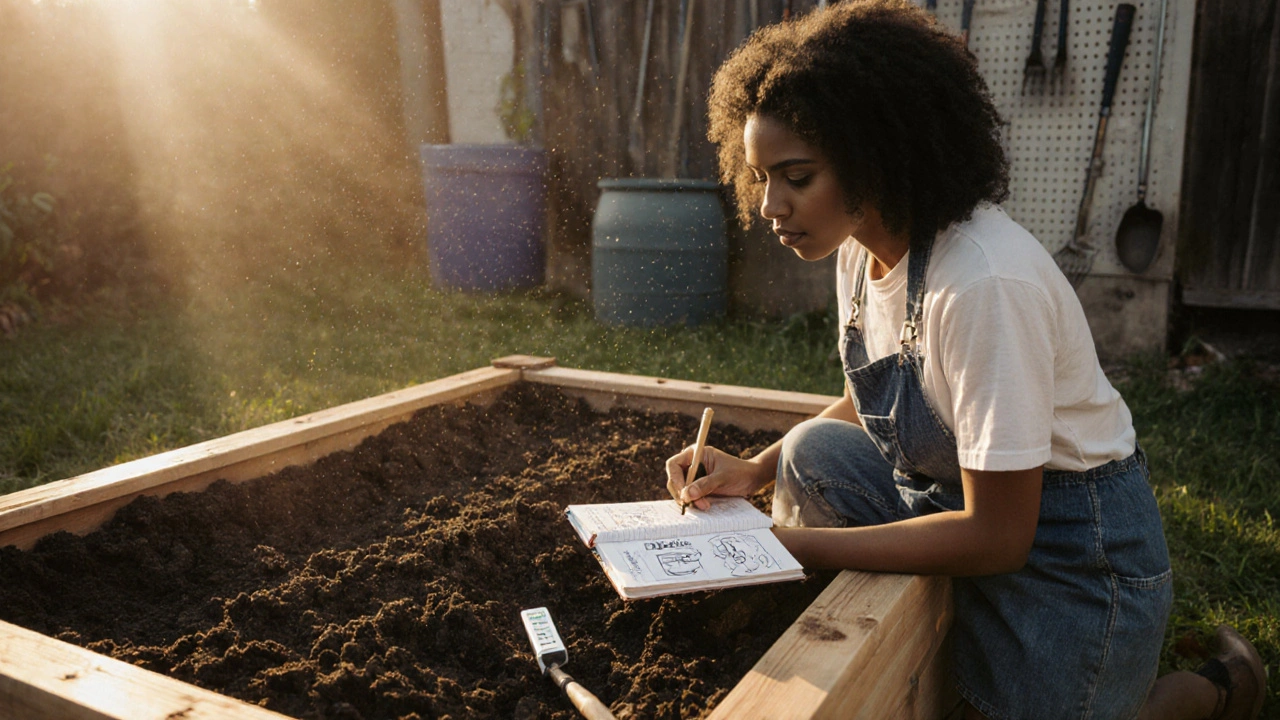Compost Timeline Calculator
Compost Preparation Guide
Based on your input, we'll estimate when your compost will be ready using the 3-6 month timeframe from the article.
Each step represents approximately 1 month of composting time.
Browns (dry leaves, newspaper) = carbon-rich materials
Your Compost Timeline
Your compost should be ready in .
Tip: If you want faster results, add more greens and turn more frequently. Remember: the ideal moisture level is like a wrung-out sponge.
Ever wondered how to turn a patch of dirt into a thriving, chemical‑free food oasis? Organic Gardening is a planting approach that works with nature instead of against it, letting soil microbes, beneficial insects, and good plant varieties do the heavy lifting. In this guide you’ll discover exactly what to study, which tools to grab, and how to avoid the common pitfalls that trip up most newcomers.
Set Your Learning Goals and Timeline
Start by deciding what you want out of your garden. Do you aim for fresh salad greens, a year‑round herb shelf, or a handful of heirloom tomatoes? Write those goals down and attach a realistic timeline-most soils need a season or two to build up organic matter. A clear roadmap keeps you from jumping from compost to pest control without a solid foundation.
Understand Soil Health - The Core of Organic Success
Soil isn’t just dirt; it’s an ecosystem. A healthy profile includes structure, fertility, proper pH, and a bustling community of microbes. Grab a basic soil pH test kit and aim for a range between 6.0 and 7.0 for most vegetables. If it’s too acidic, work in lime; if it’s alkaline, add elemental sulfur.
Build Organic Matter with Compost
The single most effective way to boost soil life is compost is a well‑managed pile of kitchen scraps, garden waste, and brown material that decomposes into dark, crumbly humus. Start small: a 3‑by‑3‑foot bin with alternating layers of greens (fruit peels, coffee grounds) and browns (dry leaves, shredded newspaper). Turn the pile every two weeks and keep it moist-think a wrung‑out sponge. Within three to six months you’ll have nutrient‑rich compost that raises soil organic content by 2‑5 %.
Mulch: Protect, Conserve, and Feed
After planting, spread a 2‑to‑3‑inch layer of mulch-straw, wood chips, or shredded leaves-around each plant. Mulch suppresses weeds, conserves moisture, and slowly breaks down, adding more organic matter. For vegetable beds, straw works best because it’s easy to remove before harvest.
Introduce Beneficial Insects
Instead of reaching for chemical sprays, invite natural predators. Ladybugs, lacewings, and parasitic wasps hunt aphids, whiteflies, and caterpillars. Plant nectar‑rich flowers like fennel, dill, and yarrow along the garden edge to give them a home base. A simple bee hotel can also attract solitary bees that boost pollination.
Practice Crop Rotation and Companion Planting
Rotate families of crops each season to break disease cycles and balance nutrient use. For example, follow a nitrogen‑fixing legume (peas, beans) with a heavy feeder like cabbage. Companion planting-marrying tomatoes with basil or carrots with onions-can repel pests and improve flavor.
Consider Raised Beds for Better Control
If your native soil is compacted or contaminated, a raised bed gives you a clean canvas. Fill it with a mix of 30 % compost, 30 % aged manure, and 40 % garden soil. This blend drains well, warms quickly in spring, and lets you tweak pH without disturbing the ground below.

Cover Crops: Give Your Soil a Winter Rest
Between harvests, sow a cover crop-clover, rye, or buckwheat. These plants protect the soil from erosion, capture nitrogen, and, when turned under, add fresh organic matter. A simple rule: plant a cover crop that matures in 6‑8 weeks before the first frost.
Simple DIY Tools for the Organic Beginner
- Hand trowel - for seedling transplanting.
- Garden fork - loosens soil without breaking structure.
- Compost thermometer - ensures the pile stays hot (130‑150 °F) to kill pathogens.
- Rain barrel - captures free water, reducing irrigation costs.
Comparison of Soil Amendment Methods
| Method | Time to benefit | Nutrient profile | Cost (UK) |
|---|---|---|---|
| Compost | 3‑6 months | Balanced N‑P‑K, high organic matter | £0‑£20 (DIY) |
| Manure (well‑aged) | 2‑4 months | High N, moderate P, K | £15‑£30 per cubic metre |
| Mulch (straw) | Immediate | Low N, improves moisture retention | £5‑£10 per bag |
| Green manure (cover crops) | 6‑8 weeks after incorporation | Varies - often high N | Seed cost £2‑£5 per packet |
Common Mistakes and How to Fix Them
- Over‑watering. Soil that stays soggy kills beneficial microbes. Use a moisture meter or simply stick a finger 2 inches deep; if it feels dry, water.
- Skipping soil testing. Guessing pH leads to nutrient lock‑out. Test at least once a year and amend accordingly.
- Relying on synthetic fertilizers. They feed weeds and disrupt microbial balance. Stick with compost, worm castings, or fish emulsion.
- Planting too densely. Crowding reduces air flow and invites disease. Follow seed‑packet spacing guidelines.
Step‑by‑Step Learning Plan (12‑Month Roadmap)
- Month 1‑2: Read a beginner’s organic gardening book (e.g., "The Organic Gardener’s Handbook"). Set up a compost bin and a soil test.
- Month 3‑4: Prepare a raised bed, add compost, and plant a quick‑growing crop like radishes. Observe soil texture.
- Month 5‑6: Introduce mulch and beneficial insects. Start a small herb garden in containers.
- Month 7‑8: Rotate to a different crop family. Plant a cover crop before the first frost.
- Month 9‑10: Evaluate harvest, note pest issues, adjust pH if needed. Expand to a second bed.
- Month 11‑12: Reflect on successes, plan next year’s crop calendar, and maybe try vermicomposting for a steady supply of worm castings.
Resources You Can Trust
- Royal Horticultural Society (RHS) - Soil health guides.
- Soil Association - Certification standards for organic inputs.
- "The Rodale Book of Composting" - Practical step‑by‑step.
- Local Brighton community garden - Free workshops on companion planting.

Wrap‑Up: Your First Organic Harvest
When you pull the first lettuce leaf from a soil you built with compost, mulch, and beneficial insects, you’ll feel the payoff of every hour spent learning. Remember: organic gardening is a marathon, not a sprint. Keep notes, adjust based on what you see, and let nature do the heavy lifting.
How long does it take for compost to be ready?
A well‑maintained pile reaches usable compost in 3‑6 months. Turn it regularly and keep it moist to speed up the process.
Do I need a pH test for every garden?
Testing once a year is enough for most home gardens. Adjust only if you see nutrient deficiencies or poor plant growth.
Can I grow vegetables in containers organically?
Absolutely. Use a high‑quality potting mix enriched with compost, add organic fertilizer sparingly, and ensure good drainage.
What are the best low‑maintenance crops for beginners?
Radishes, lettuce, spinach, and beans need minimal care and grow quickly, giving fast feedback for new gardeners.
How do I attract beneficial insects without buying them?
Plant a diversity of nectar‑rich flowers, provide shelter like a bee hotel, and avoid broad‑spectrum insecticides. Over time, the garden becomes a magnet for ladybugs, hoverflies, and parasitic wasps.
